Affiliate links on Android Authority may earn us a commission. Learn more.
HUAWEI P30 review: High cost of entry
Published onApril 5, 2020
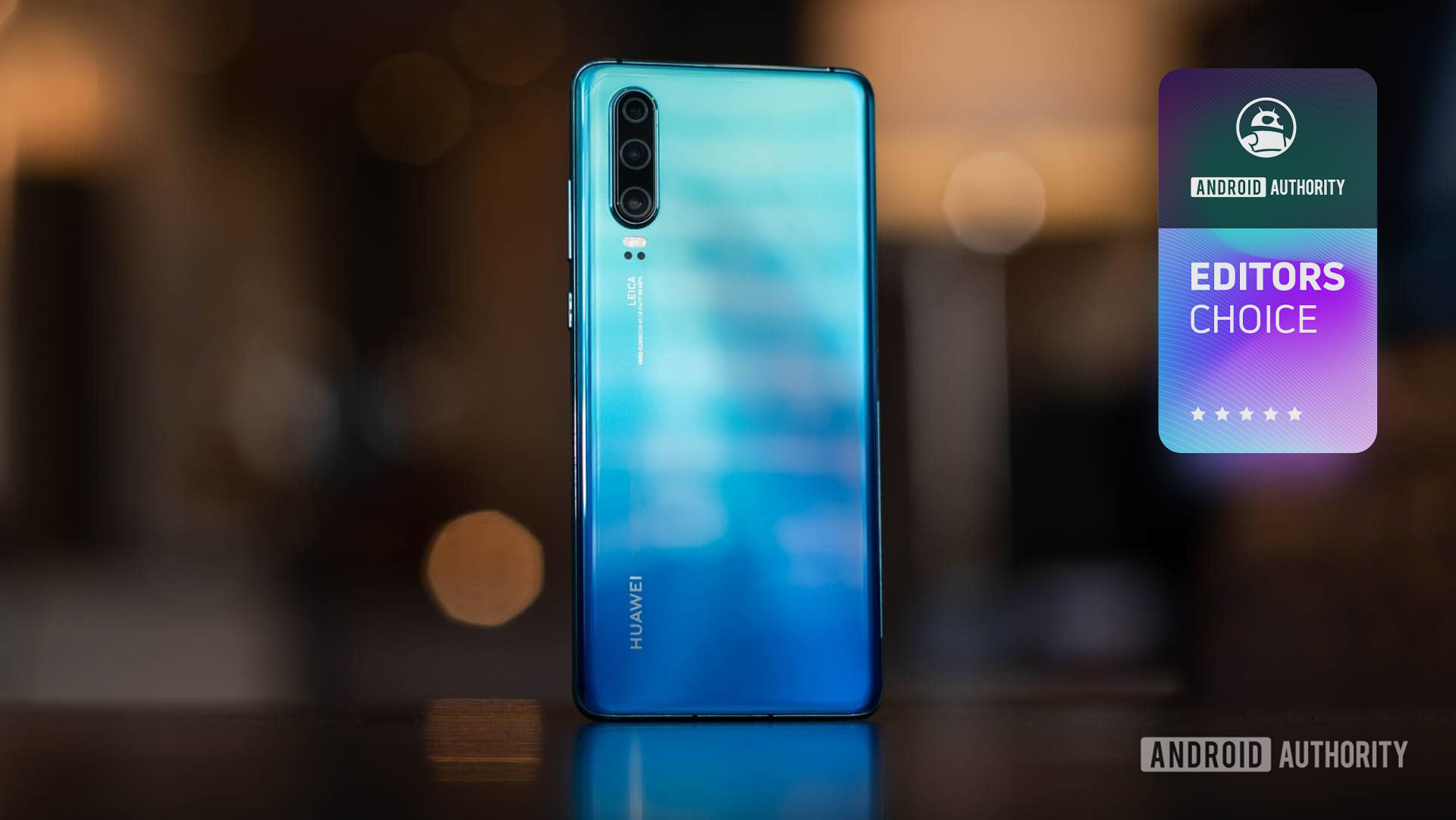
In our written review of the HUAWEI P30 Pro, Bogdan stated the phone had superpowers. Its 5x optical telephoto camera, impossibly good low-light performance, and absolutely stellar battery life made this device a winner, but it’s important to note that the P30 Pro has a sibling — one that might sway fans of smaller devices.
What are the differences between the HUAWEI P30 and the HUAWEI P30 Pro, and how much do those differences actually affect the experience? Is the price differential worth the upgrade?
This is Android Authority’s HUAWEI P30 review.
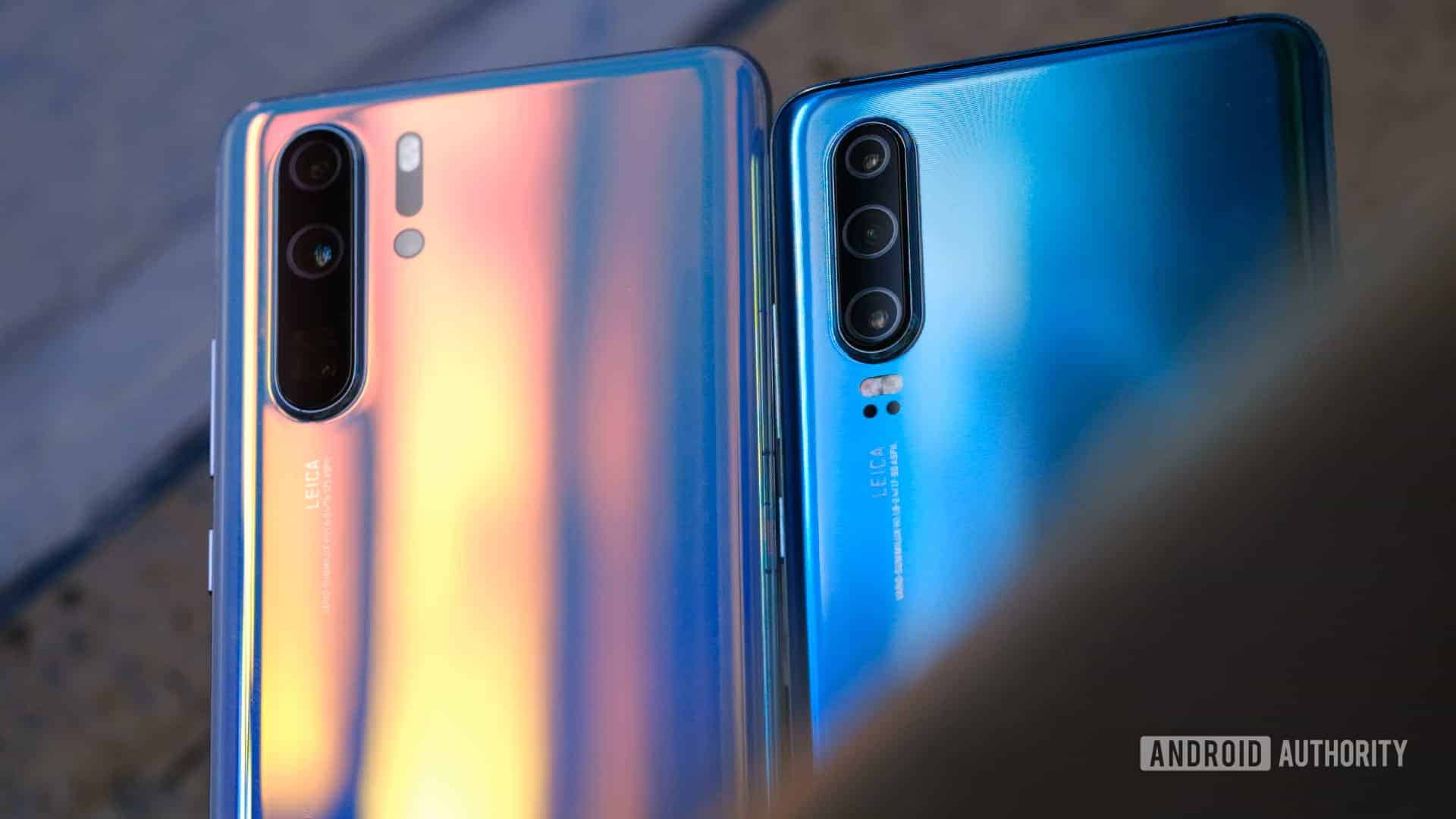
HUAWEI P30 review: The big picture
The HUAWEI P30 has many of the great features users will find in the more premium HUAWEI P30 Pro, with a few deductions that the company doesn’t think users will particularly miss. These are fashion- and photography-focused devices first and foremost, and while the standard P30 doesn’t have the 5x optical telephoto lens that makes the P30 Pro so incredible, it maintains most of the great fashion and photography features.
The P30 is targeted at consumers who want a smaller device without sacrificing the image quality found in the Pro model. While things like wireless charging and IP68 water and dust resistance were stripped from the smaller model, many customers may be willing to part with them in order to save some money and gain a headphone jack.
Initially priced at about 800 euros (~$900), the P30 can now be found in the U.S. via B&H for just $599. That price makes the P30 a competitive alternative for U.S consumers to phones such as the OnePlus 6T, but European consumers may find more bang for the buck elsewhere.
What’s in the box
- 40W fast charger
- 3.5mm wired earbuds
- A basic clear case
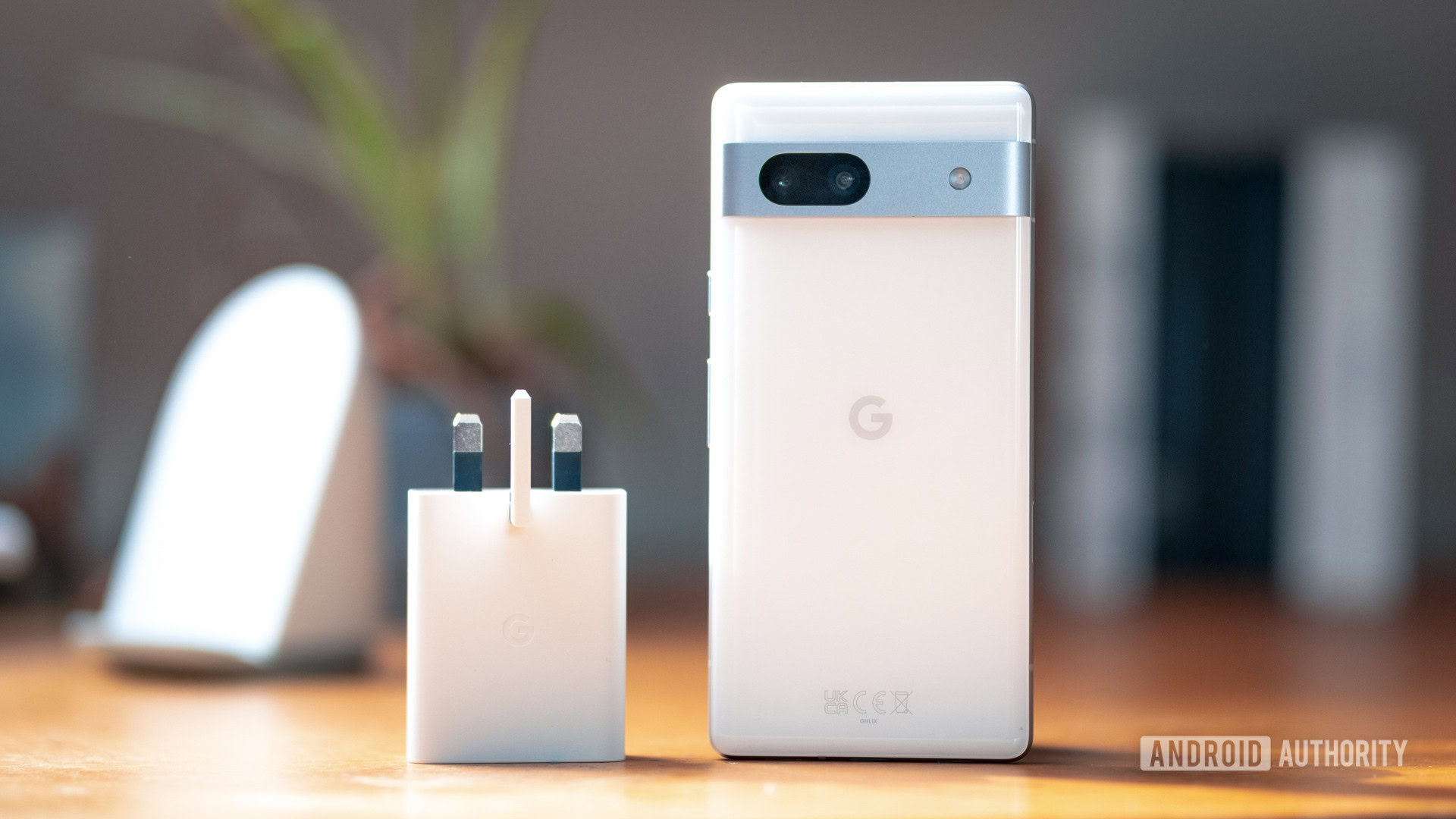
Even though the HUAWEI P30 isn’t considered quite as premium as the HUAWEI P30 Pro, it still comes with many of the same accessories. You’re getting the same 40W charging brick that allows this device to charge up quickly, and you get a basic clear case. HUAWEI swaps the USB-C headphones packed with the P30 Pro for a pair of 3.5mm wired headphones, thanks to the presence of a standard headphone jack on the P30.
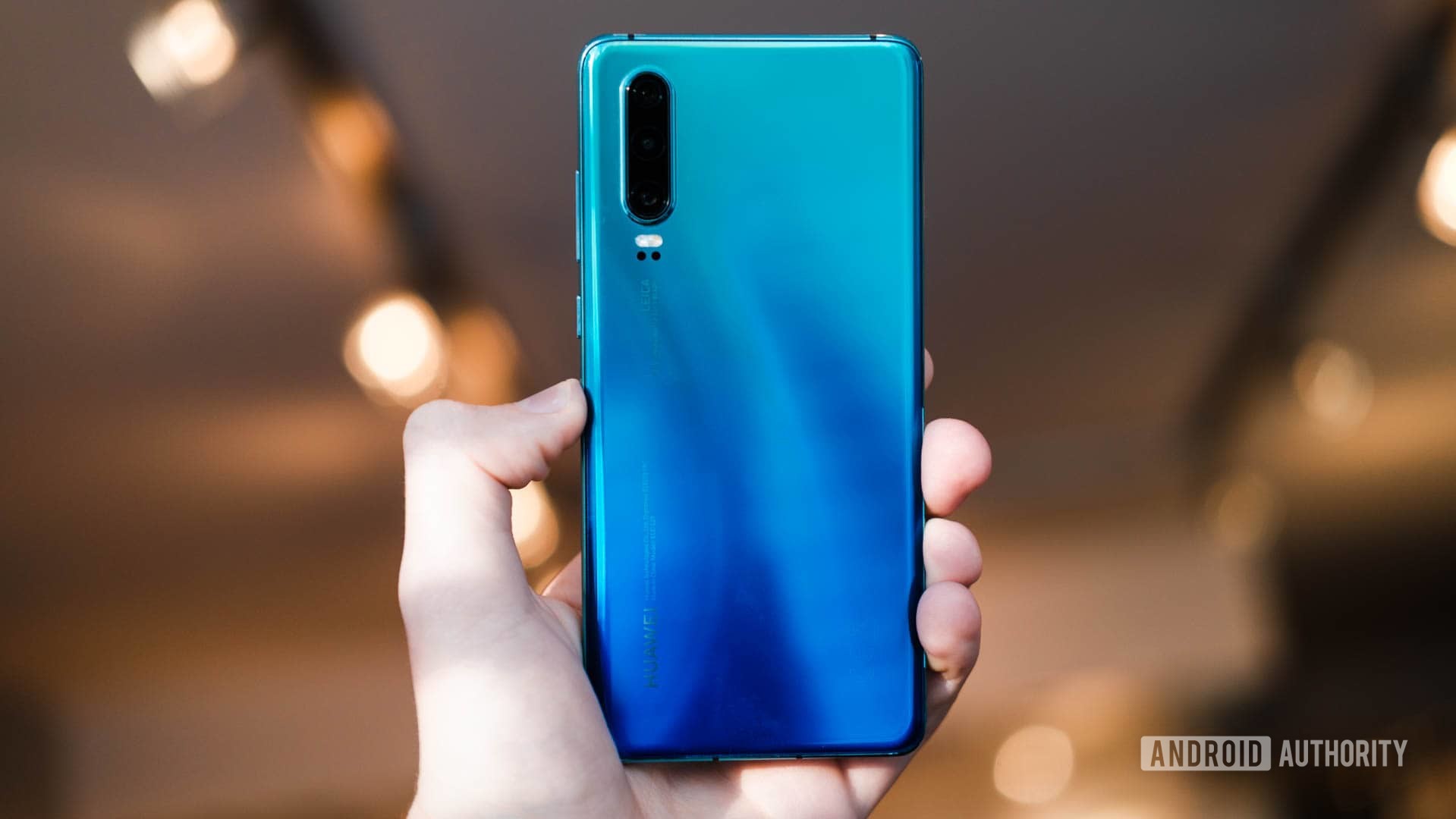
Design
- 149.1 x 71.36 x 7.57mm
- 165g
- Waterdrop notch
- USB-C port
- Headphone jack
The HUAWEI P30 has a narrow, candy bar-style design most similar to its previous iteration, the HUAWEI P20. The general shape and form factor are effectively the same. HUAWEI shrunk the bezels, shrunk the notch, and removed the gap in the triple camera array on the rear and the fingerprint reader 0n the front.
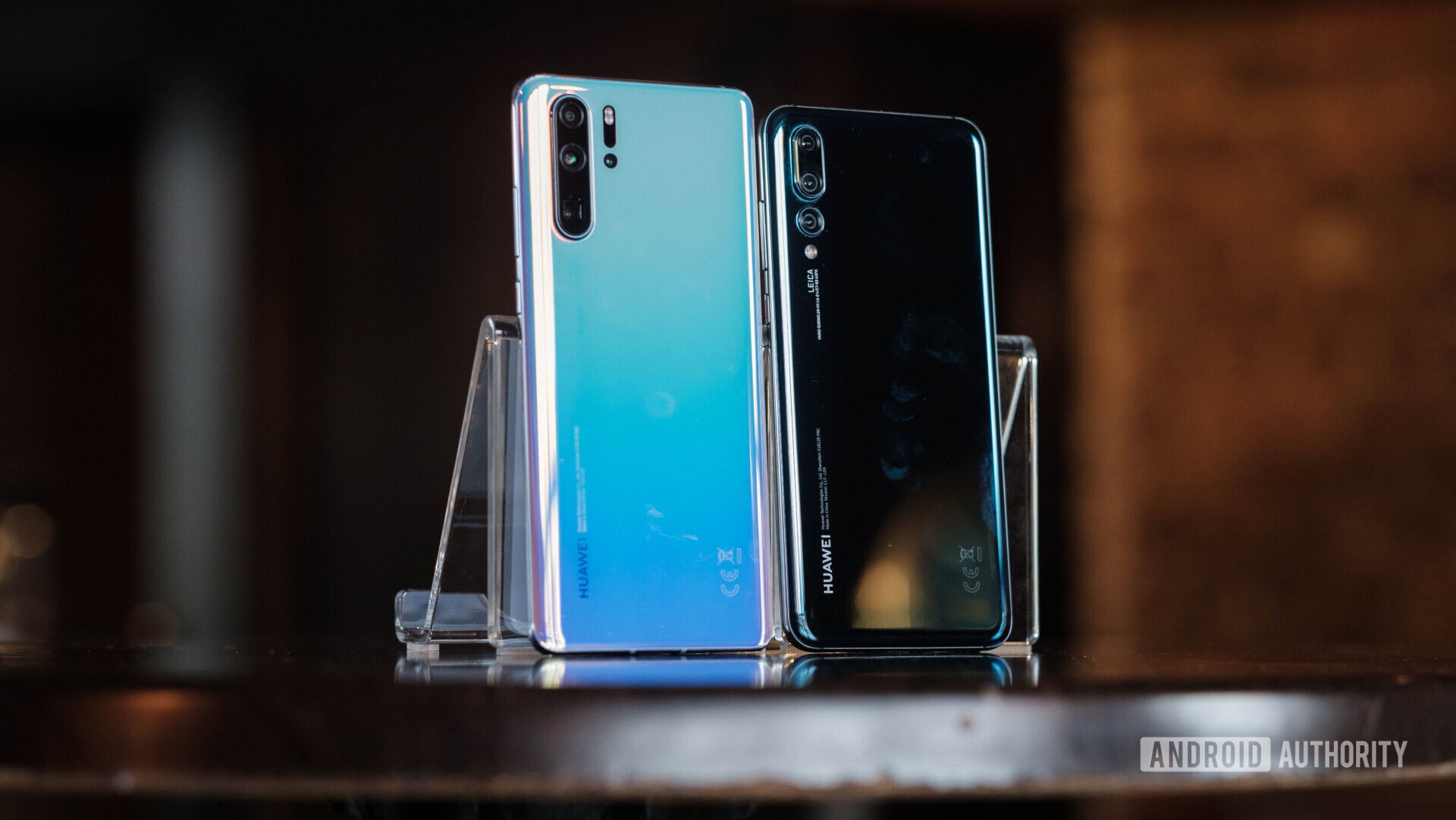
The P30 feels premium in the hand, with its glass-backed design and beautiful colorways. The flatter screen and smaller design make it feel perhaps a bit less premium than the P30 Pro, but people who like smaller phones will be happy to have an option that is nearly as powerful as the larger model. The frame is made of aluminum, so it’s really only the lack of curved glass that gives this device away as the budget option.
Compared to last year’s P20, the P30 has a much more expansive display. The standard fingerprint reader has been replaced with an in-display option, allowing HUAWEI to fill in the bottom bezel with more screen real estate.
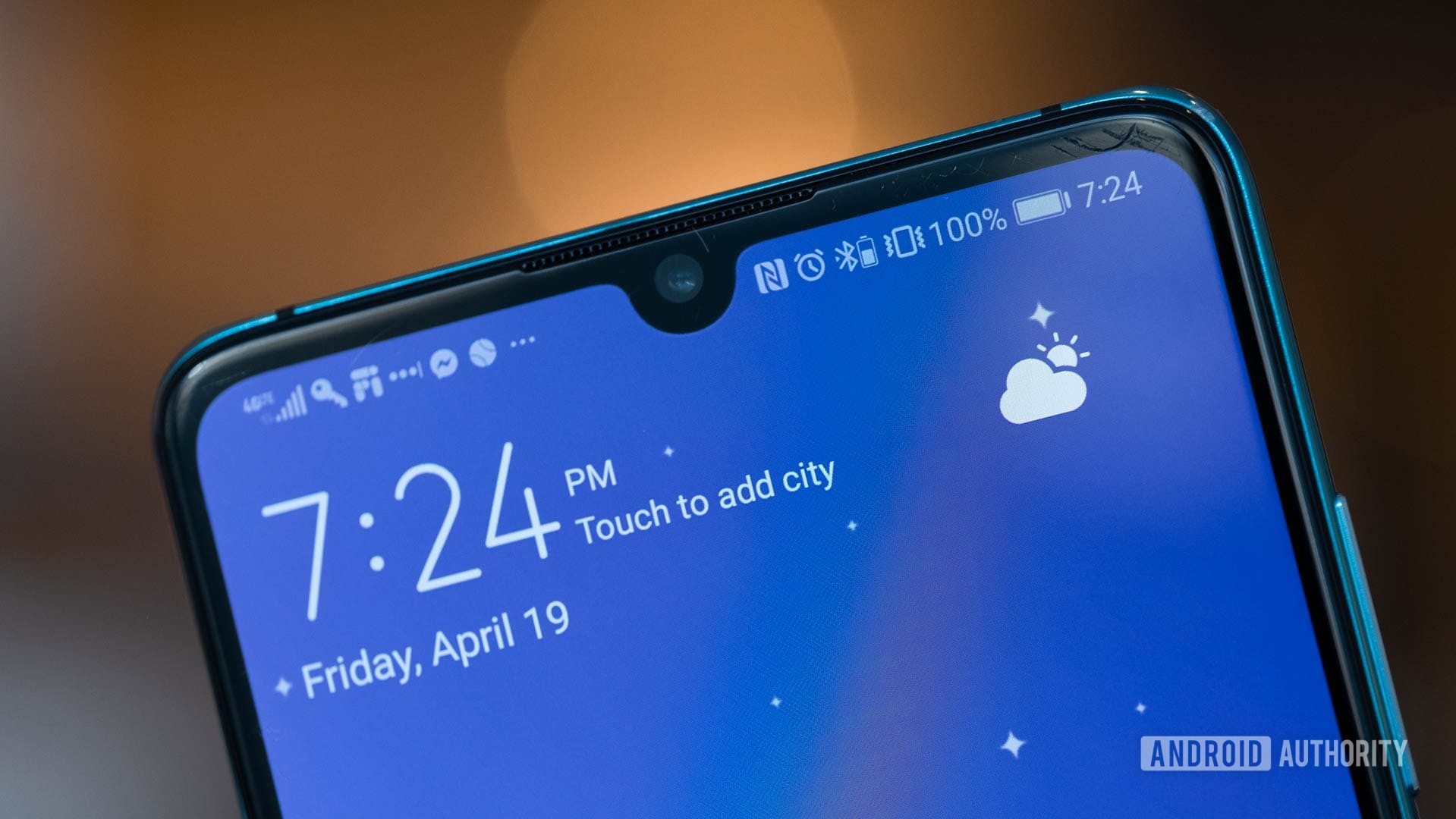
The P30’s notch is noticeably smaller than last year’s P20 thanks to the waterdrop design used to house the 32MP shooter. While I appreciate the small size of this notch, the punch hole design of the Samsung Galaxy S10 makes this feel just a bit outdated to me. With loads of phones launching in 2019 featuring more interesting notch designs, the P30’s waterdrop notch feels stuck in 2018.
The P30 is a very attractive device, but the notch feels a bit outdated.
A single camera on the front means no 3D face unlock like we saw on last year’s HUAWEI Mate 20 Pro, but standard face unlock works quite well. That being said, it’s still possible to fool the system by using a photo of the owner’s face, which poses an obvious security threat. If you’re worried about people breaking into your device, you’ll probably want to use a pin or the on-screen fingerprint reader.
While the P30 Pro ditches the speaker grille altogether in favor of an under-the-display speaker, the smaller P30 carries over the grille in an inconspicuous manner. The phone hides the grille in the small strip of bezel at the top of the display. This seems like a great option, since it doesn’t take up any more space than the P30 Pro’s “electromagnetic levitation” speaker.
On the bottom, you’ll find a single speaker grille for audio and a 3.5mm headphone jack for wired listening. HUAWEI said it couldn’t manage to fit the jack in the bigger P30 Pro, but we’re finding that hard to believe. Still, we’re glad to see the jack make an appearance on the smaller device.
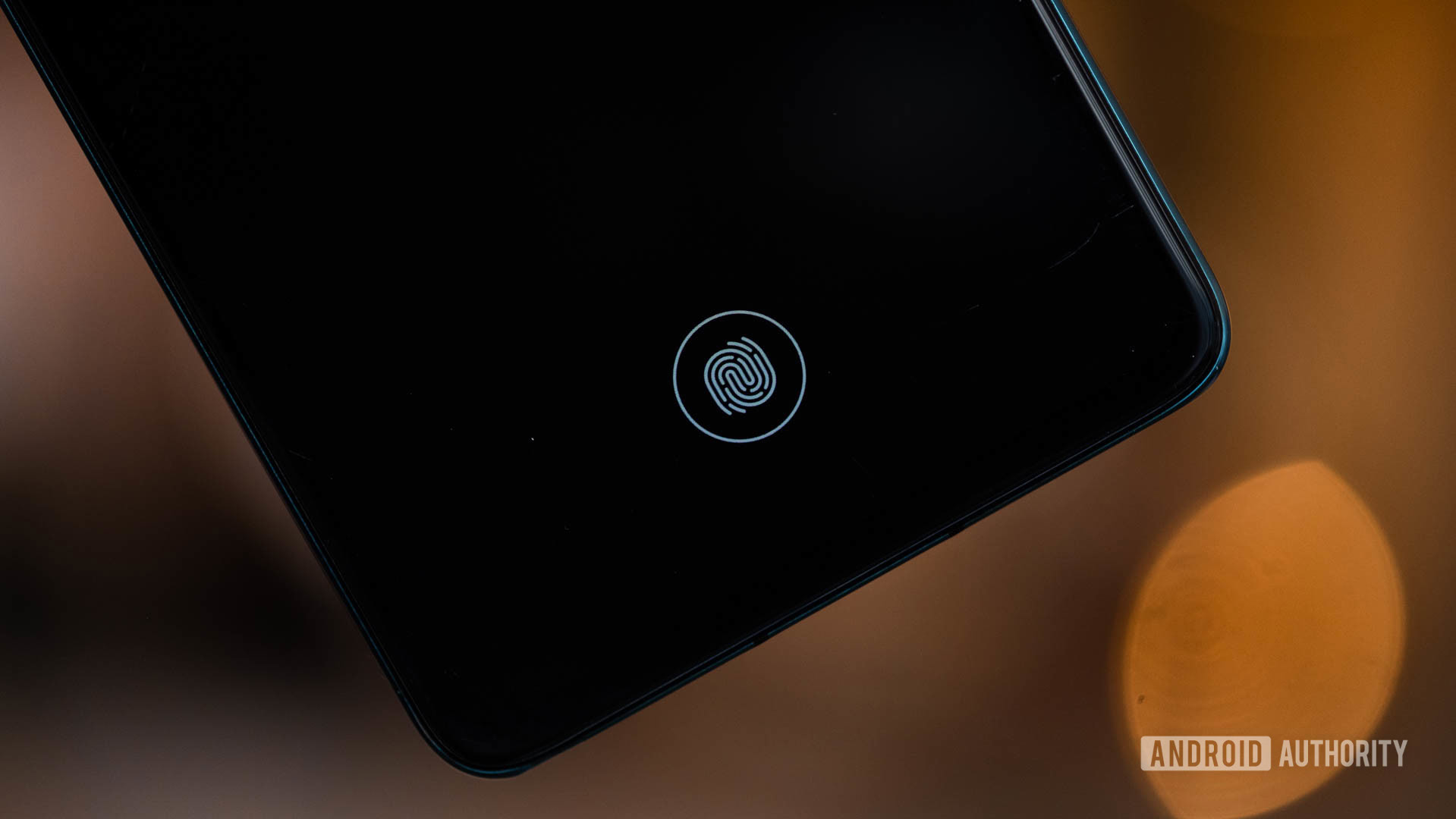
Remember that in-display fingerprint reader I mentioned earlier? It’s decent. HUAWEI says it’s using the same optical reader found in the Mate 20 Pro, and while it can sometimes be hit-or-miss, I found quite a bit of success using it as my main authentication method.
The backsides of HUAWEI’s P-series devices have always been fashion-forward, and that’s no different this year. The P30 is quite an attractive device in general, with its clean triple-camera design and stunning colorways. The Amber Sunrise option is definitely a personal favorite, with its punchy orange-to-red gradient, though the Aurora model we used for this review was absolutely stunning as well. The finish is reminiscent of fish scales or the aurora borealis, and it impresses in person. For a more sedate, professional look, you might opt for the standard Black or Breathing Crystal options.
In a sea of Android phones that look exceedingly similar, the design of the HUAWEI P30 feels quite unique. I’m happy to see a smaller device that packs a lot of power, and the headphone jack wins HUAWEI some brownie points.
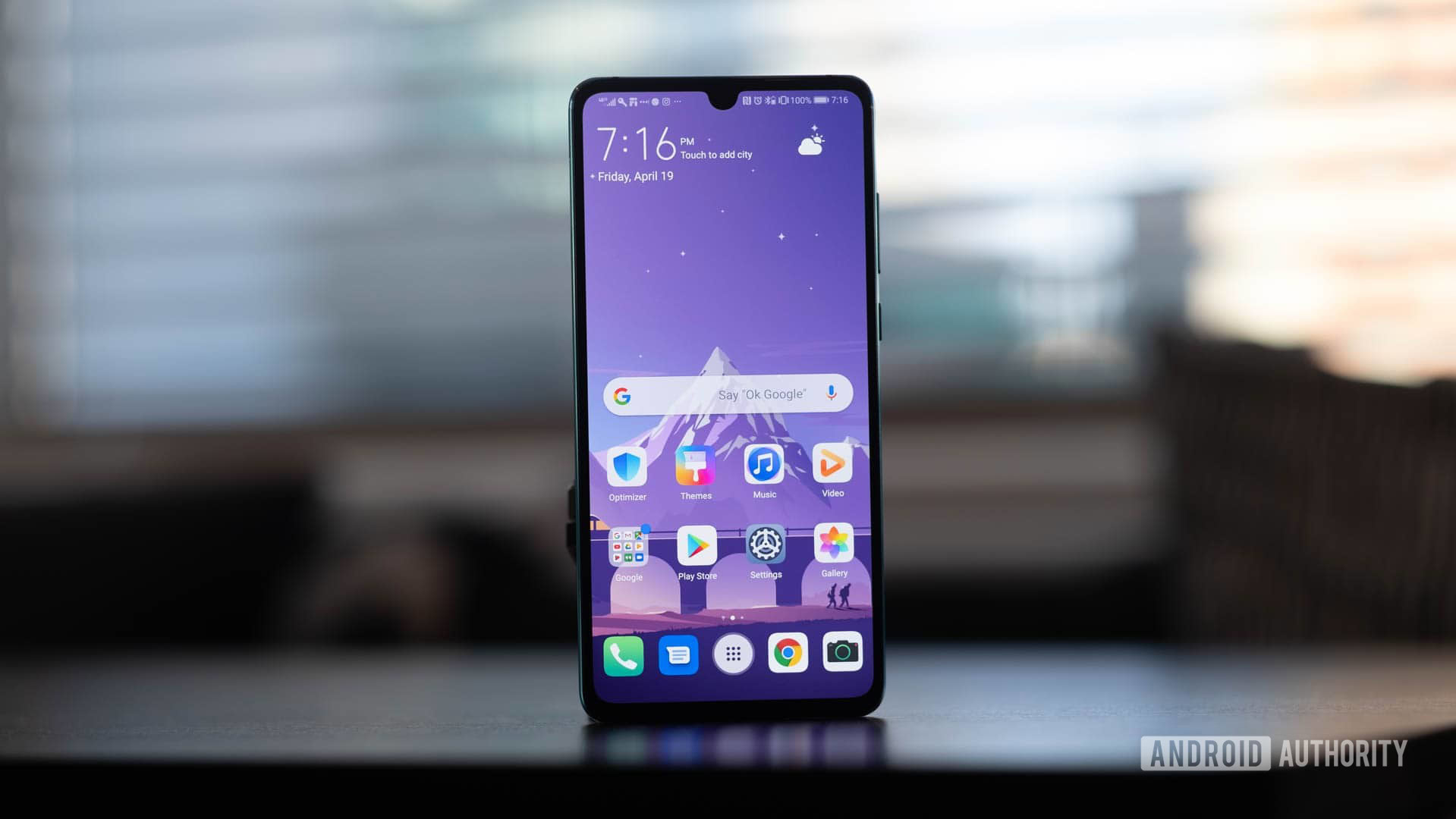
Display
- 6.1 inches
- Full HD+ 2,340 x 1,080, 19.5:9
- OLED
- HDR10, DCI-P3
- 422ppi
- Always-on display
Often times the smaller variant of high-end smartphones features reduced screen resolution, but I’m happy to report that’s not the case here. The HUAWEI P30 has the same 2,340 by 1,080 resolution as the Pro model, but with a smaller 6.1-inch diagonal and glass that is flat instead of curved. Carrying over the same resolution in a smaller display gives the P30 a higher pixel density than the P30 Pro, and images look bright, vivid, and crisp.
Like the P30 Pro, the OLED panel allows for an always-on display that doesn’t impact battery life. A double tap will bring up the in-display fingerprint reader, but that’s it.
Overall I’m quite happy with the display. It scored third in our testing, falling behind only the Samsung Galaxy S10 and S10 Plus.
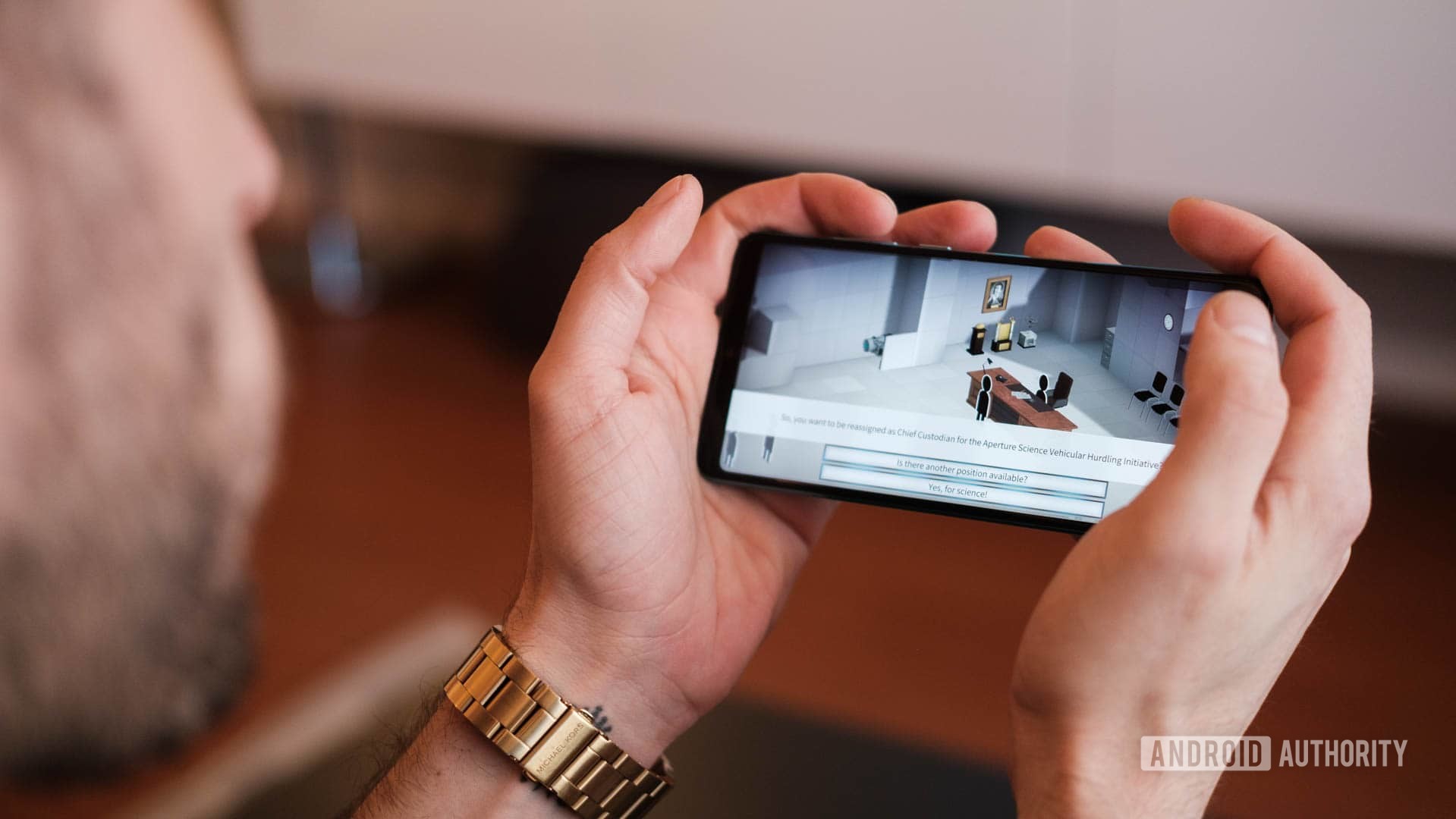
Performance
- HUAWEI Kirin 980
- Octa-core
- Mali-G76 MP10
- 6GB of RAM
- 128GB of storage
- Nano-memory card slot
The HUAWEI P30 is sporting Huawei’s latest Kirin 980 SoC, which performs extremely well. Stutters and frame drops are effectively a thing of the past, and I saw no issues in performance during my time with the device.
Just like the P30 Pro, there is no microSD card slot in this phone. Instead, you’ll find a slot for Huawei’s Nano Memory storage solution. Proprietary solutions are always frustrating, and you’ll have to cough up significantly more dough if you want to expand the local storage in your P30 compared to microSD cards.
The P30 has nearly the same specs as the P30 Pro, so it makes sense that it would perform similarly in benchmarks. While Geekbench 4 and AnTuTu resulted in scores similar to the P30 Pro, the P30 surprised us with noticeably higher scores in 3DMark.
In Geekbench, the HUAWEI P30 rated a single-core score of 3,284 and a multi-core score of 9,789. AnTuTu saw a score of 286,936. 3DMark topped a score of 3,924 in OpenGL and 4,131 in Vulcan.
These scores are similar to the HUAWEI P30’s closest competition, the OnePlus 6T. While the scores are far from the highest we’ve seen, the Kirin 980 debuted six months ago, so it makes sense that it can’t quite compete with the newer Qualcomm Snapdragon 855. Still, benchmarks are only here to show objective results, and the P30’s performance in everyday use is just fine.
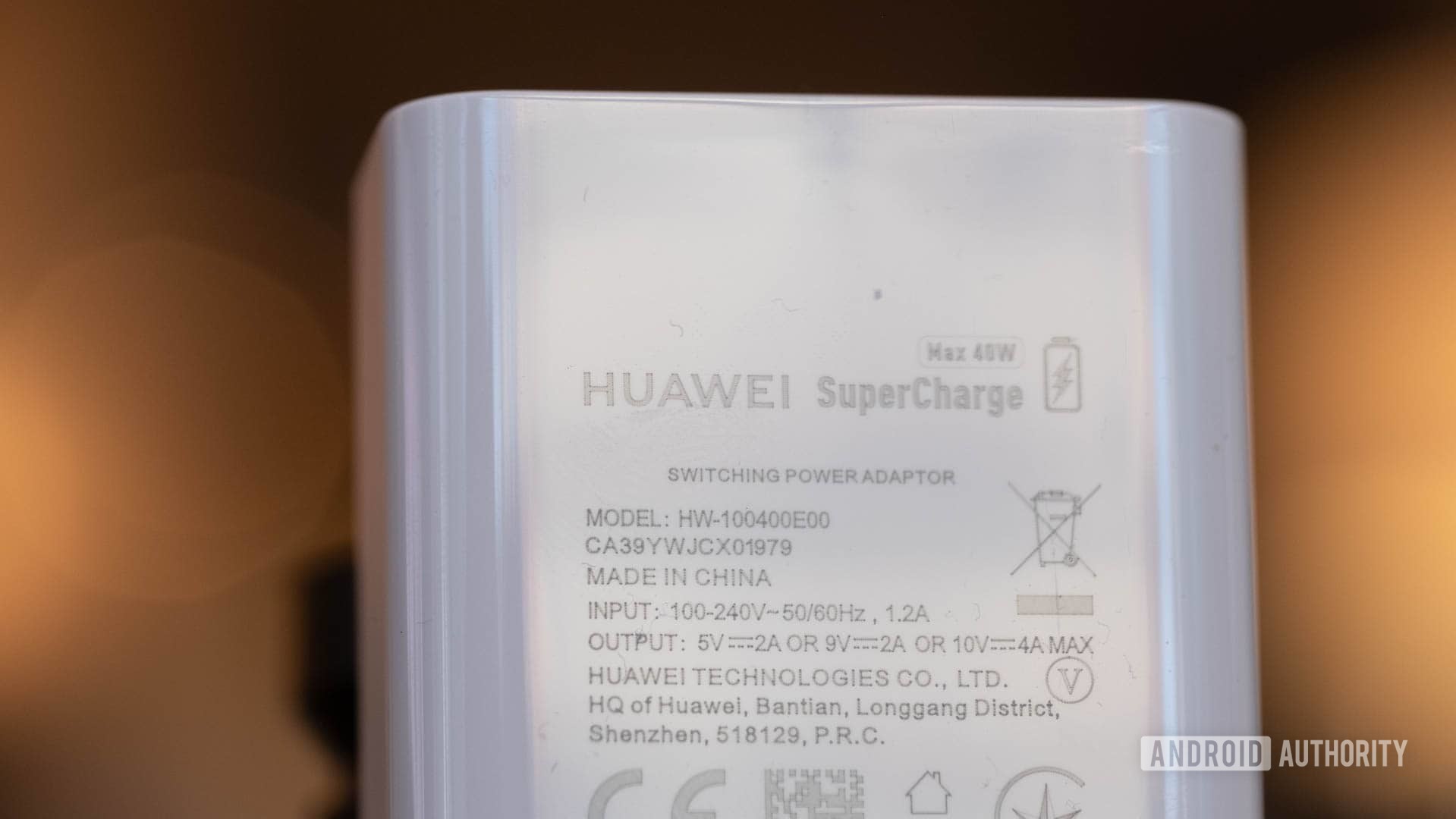
Battery
- 3,650mAh
- 40W fast charging
While battery life on the HUAWEI P30 is acceptable, it’s not nearly as good as the P30 Pro. The battery capacity is 550mAh less at 3,650mAh, and while the screen is also smaller, the sheer capacity loss takes a hit on the device’s longevity. I averaged about five to six hours of screen-on time, primarily using a combination of Slack, Twitter, Relay for Reddit, and YouTube.
This phone will likely last you through the end of a day, but it doesn’t match the effective two-day battery life of the Pro model. Fortunately, the included 40W Supercharger makes the phone juice up quickly, meaning you can always pump quite a charge back into your device by plugging in for just a few minutes.
Battery life could be better, but 40W supercharging is an amazing feature.
Sadly, HUAWEI removed wireless charging and wireless reverse charging from the P30 (compared to the P30 Pro), so you’ll have to stick with wired charging.
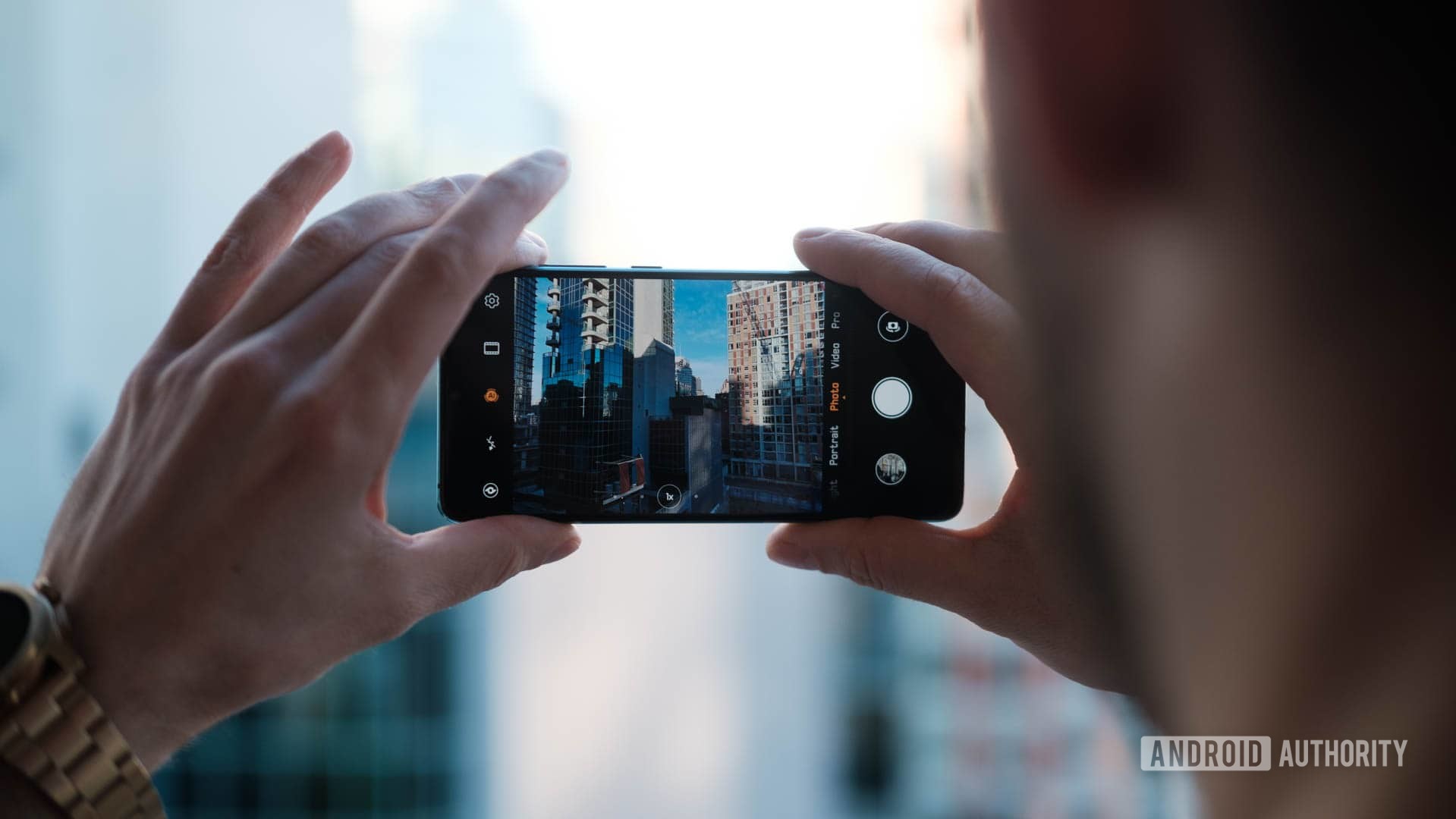
Camera
- Standard: 40MP, f/1.8, OIS
- Pixel-binned 10MP images
- Ultra-wide: 16MP, f/2.2
- Telephoto: 8MP, f/2.4, OIS
- Selfie: 32MP, f/2.0
The camera has always been a focal point for HUAWEI’s P-series devices, and the P30 is no exception. Though it doesn’t have the impressive 5x optical periscope zoom of the P30 Pro, the P30’s 3x optical zoom lens is nothing to scoff at, and, though the phones’ cameras have different resolutions and apertures, the devices deliver nearly the same image quality.
Image quality is extremely similar between the P30 Pro and P30, which is to say very, very good.
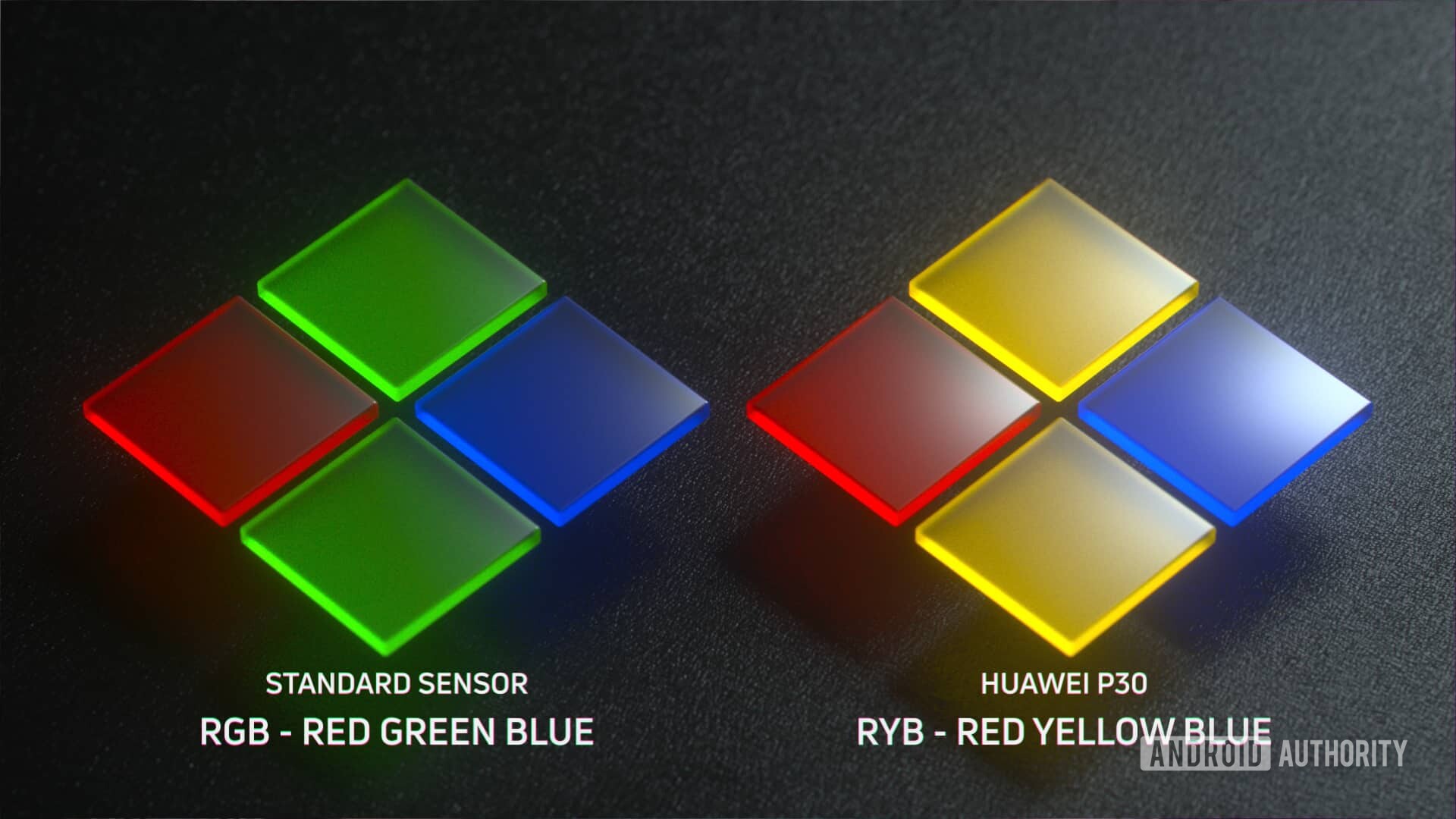
The P30 uses a specialized RYYB filter array for its sensor, capturing more detail than a standard RGB filter array. This results in some incredibly sharp images, especially via the 40MP sensor, where the phone will bin (combine) pixels to produce a detailed 10MP image by default.
If you want a wider view, HUAWEI included a 16MP, 0.6x wide-angle lens that doesn’t have quite the field of view as the Samsung Galaxy S10, but still does a decent job of getting more in the frame. The optical 3x telephoto lens produces stunning images via the 8MP sensor, and the hybrid 5x AI zoom makes images nearly as clear as the 3x telephoto lens.
If you want to take a closer look at our photo samples in full resolution, we’ve made them available in a Google Drive folder here.
If you’re looking at the HUAWEI P30 you’re probably interested in the zoom capabilities, and I’ll tell you up front that they’re very good. Color and dynamic range remain similar across the three cameras, and sharpness is on point even though all the sensors have different resolutions. The standard 40MP camera definitely produces the best color and detail thanks to pixel binning, but the optical 3x telephoto lens produces equally sharp frames.
Dynamic range on the HUAWEI P30 is very good, but it does wash out the images just a bit. It’s certainly better than the dynamic range on the Samsung Galaxy S10, but I personally prefer images from the Xiaomi Mi 8. Overall, I feel that HUAWEI has found a nice middle ground with color and dynamic range on this camera.
Even though the P30 doesn’t include the time-of-flight sensor found on the P30 Pro, it still does a fantastic job of cutting out the subject in portrait and aperture modes. The camera can’t track depth to produce the most accurate bokeh, but subject separation is excellent if you just want to take a nice portrait-style image.
Night photos taken by the P30 are just as excellent as they are on the P30 Pro, which is to say absolutely mind-blowing. The P30 series does better night shots in auto mode than most phones do in long-exposure, night mode shots. There is no other set of devices on the market right now that can top the low-light capabilities of the HUAWEI P30 and P30 Pro.
Selfies are great in good light and poor light conditions, and color is even better than the back cameras in my opinion. Images are detailed and sharp, and you won’t be disappointed if you’re an avid selfie fiend.
The HUAWEI P30’s camera app is great. You’ll find most of the features you use in a carousel at the bottom of the screen. The shutter button is front and center. If you want to tweak the camera’s behavior more to your liking, there is an extensive set of options in the settings menu. The “more” setting on the far right of the carousel has a number of niche camera modes like Slow-mo, Light painting, and Document scanning.
HUAWEI is also utilizing an some artificial intelligence in a setting it calls Master AI. This allows the device to recognize different kinds of objects and scenes, and the device will then tweak the colors and other settings for the best image. This works on animals, plants, blue skies, and myriad other scenes, but you can always toggle Master AI off if you want complete control of your photos.
Images should be similar to those of the HUAWEI P30 Pro, and we have a full camera review for that device if you want to see a more detailed analysis.
Video capture on the P30 is also just as fantastic as the P30 Pro. The device uses a combination of optical image stabilization and electronic image stabilization to create extremely smooth video in 1080p. You can also shoot up to 4k at 30fps. Low-light performance in video is just as wonderful as it is in photo mode, showing minimal noise in low-light situations.
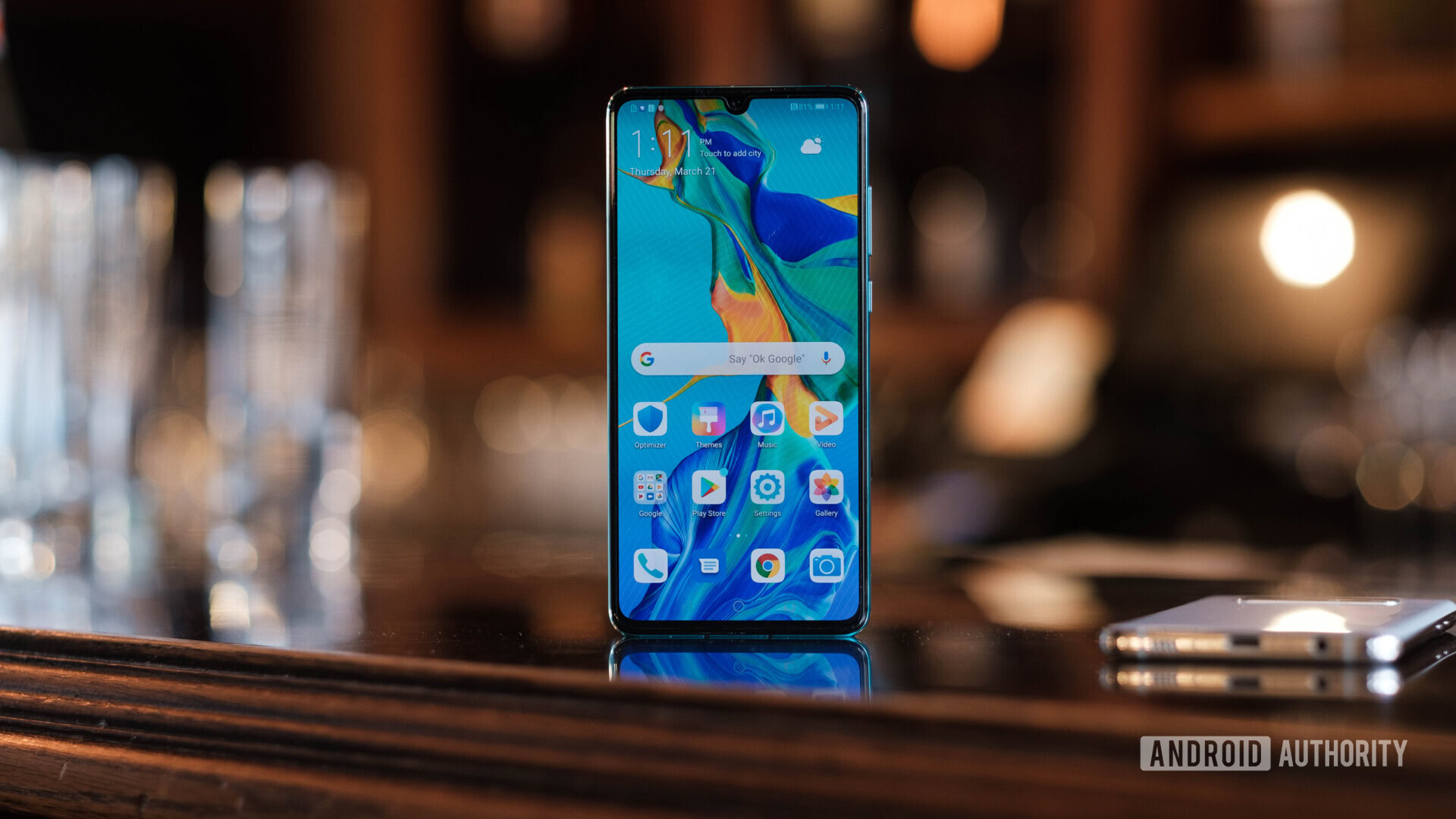
Software
- EMUI 9.1
- Android 9 Pie
- Dark theme
The HUAWEI P30 is running EMUI 9.1 based on Android 9 Pie, and the software experience is honestly a lot better than it was on previous HUAWEI devices. EMUI 9 fixed a ton of small issues, such as bundling settings in a more intuitive manner and, while there is no app drawer by default, HUAWEI has an option to bring it back if you prefer that experience.
EMUI 9.1 has navigation gestures that I think are quite intuitive. You can swipe up from the bottom to go home, swipe and hold to enable multitasking, and swipe in from the right or left side of the screen to go back. While there are definitely better navigation gestures out there (I personally enjoy the iPhone X’s a well as Motorola’s implementations), I’m happy with HUAWEI’s implementation.
Like Bogdan stated in his HUAWEI P30 Pro review, EMUI still feels a bit outdated. You have to use the old Android app drawer button if you want to use the app drawer at all. I much prefer when phones just show a swipe up arrow on the bottom of the screen. I’m also not a fan of HUAWEI’s app icon style, but that is a personal preference. You can always download icon packs from the Play Store.
Audio
- Headphone jack
- Single bottom-firing speaker, speaker grille in the top bezel
Just like on the HUAWEI P30 Pro, the speaker on the bottom of the device gets quite loud. Most phones with bottom-firing speakers also lack bass, and that is no different here. While sound through the P30 speaker is loud and clear, I wouldn’t recommend listening to music through them. If you’re just watching video though, you shouldn’t have any problems. Unfortunately, while other HUAWEI devices doubled the earpiece as a second speaker, the HUAWEI P30 only uses the single bottom firing speaker for audio. This is a shame, but since the main speaker gets so loud we don’t see this as a dealbreaker.
The headphone jack earns HUAWEI some brownie points.

Fortunately, HUAWEI included a headphone jack in the P30. Including a headphone jack always earns some brownie points from us over at Android Authority, and the port is preferred by people who are serious about quality audio.
HUAWEI P30 specs
| HUAWEI P30 | |
|---|---|
Display | 6.1-inch flat OLED display 19.5:9 ratio 2,340 x 1,080 resolution |
Processor | HiSilicon Kirin 980 |
RAM | 6GB |
Storage | 128GB Nano Memory Card expansion |
File system | Extendable Read-Only File System (EROFS) |
Battery | 3,650mAh 25W Supercharge No wireless charging |
Cameras | Rear: 27mm 40MP sensor, ƒ/1.6 aperture 16mm 16MP Ultrawide sensor, ƒ/2.2 aperture 8MP 3x telephoto sensor, ƒ/2.4 aperture RYB sensor Front: 32MP sensor, ƒ/2.0 aperture |
IP Rating | IP53 |
Headphone jack | Yes |
Security | In-display fingerprint sensor |
Software | EMUI 9.1, based on Android 9 Pie |
Connectivity | 2x2 MIMO (Cat.16 up to 1Gbps) |
Dimensions and weight | 149.1 x 71.4 x 7.6 mm 165g |
Colors | Amber Sunrise, Breathing Crystal, Pearl White, Aurora, Black |
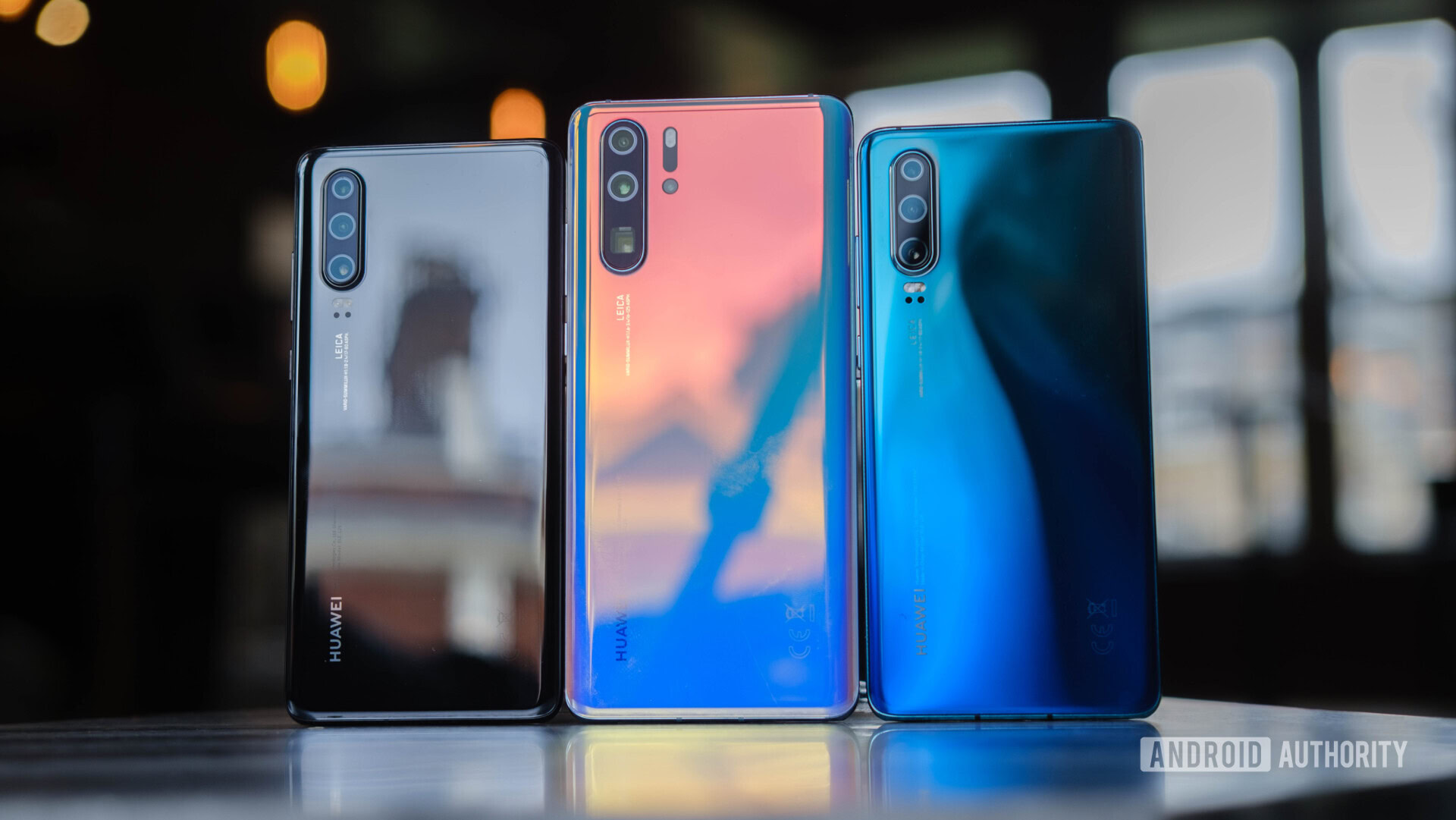
Value for money
- HUAWEI P30: 6GB RAM, 128GB ROM — $599 (U.S.), 699 pounds (U.K.)
At $599 in the U.S., the HUAWEI P30 is quite competitive. The device is clearly being positioned to undercut the Samsung Galaxy S10, but Samsung’s phone sports more features than the P30. While HUAWEI nixed options such as wireless and reverse wireless charging, IP68 water resistance, the 5x optical telephoto lens, and more from the P30, Samsung’s Galaxy S10 retains nearly every feature present in the bigger Galaxy S10 Plus model.
That being said, the $599 HUAWEI P30 undercuts the Galaxy S10, which costs $300 more at $899, dramatically. That’s a substantial price differential and puts the P30 more in line with something like the OnePlus 6T, which sports similar features and specs.
$599 is an attractive price in the U.S., but European customers might want to look elsewhere.
The P30 has a much better camera system than the OnePlus 6T, and the headphone jack also gives it a big win in the audio department. The specs on these devices are nearly identical, ignoring the difference in processors, and while the OnePlus 6T offers a far superior software experience, it’s hard to deny the stellar image quality HUAWEI and Leica have delivered on the P30.
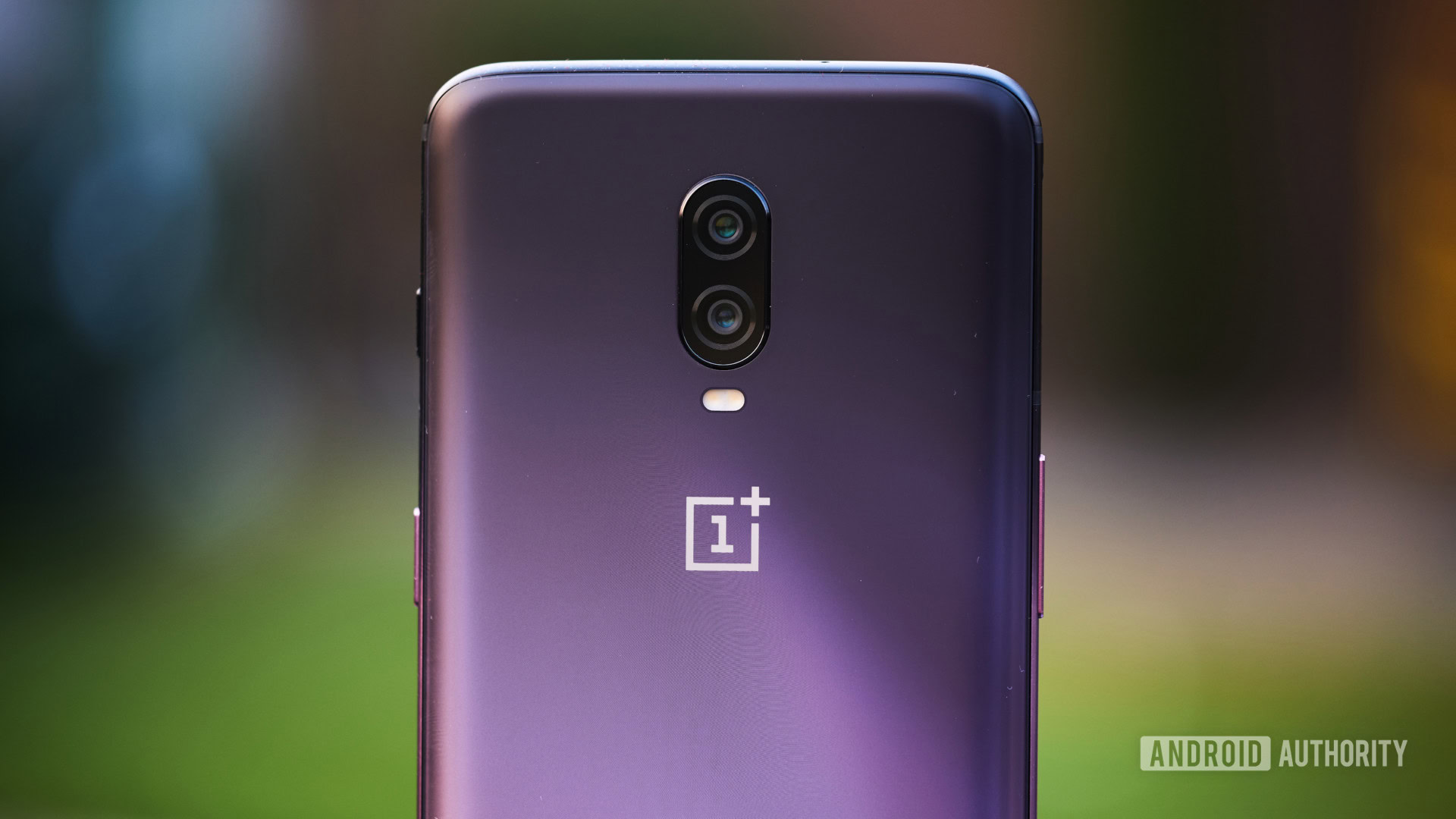
Unlike the P30 Pro, there is only one spec variant available for the HUAWEI P30: 6GB of RAM and 128GB of storage, which we’d call fairly standard for devices at this price point. The P30 will definitely deliver more value than the Pixel 3 in terms of raw specs and performance, but it’s a toss up vs the OnePlus 6T.
If you live in the U.K., the HUAWEI P30 is a much harder sell. At around 699 pounds it costs just 100 pounds less than the Samsung Galaxy S10, a phone that offers quite a few more features. The image quality is really the only thing that justifies the price of this phone in the U.K, and even then it’s not a great deal.
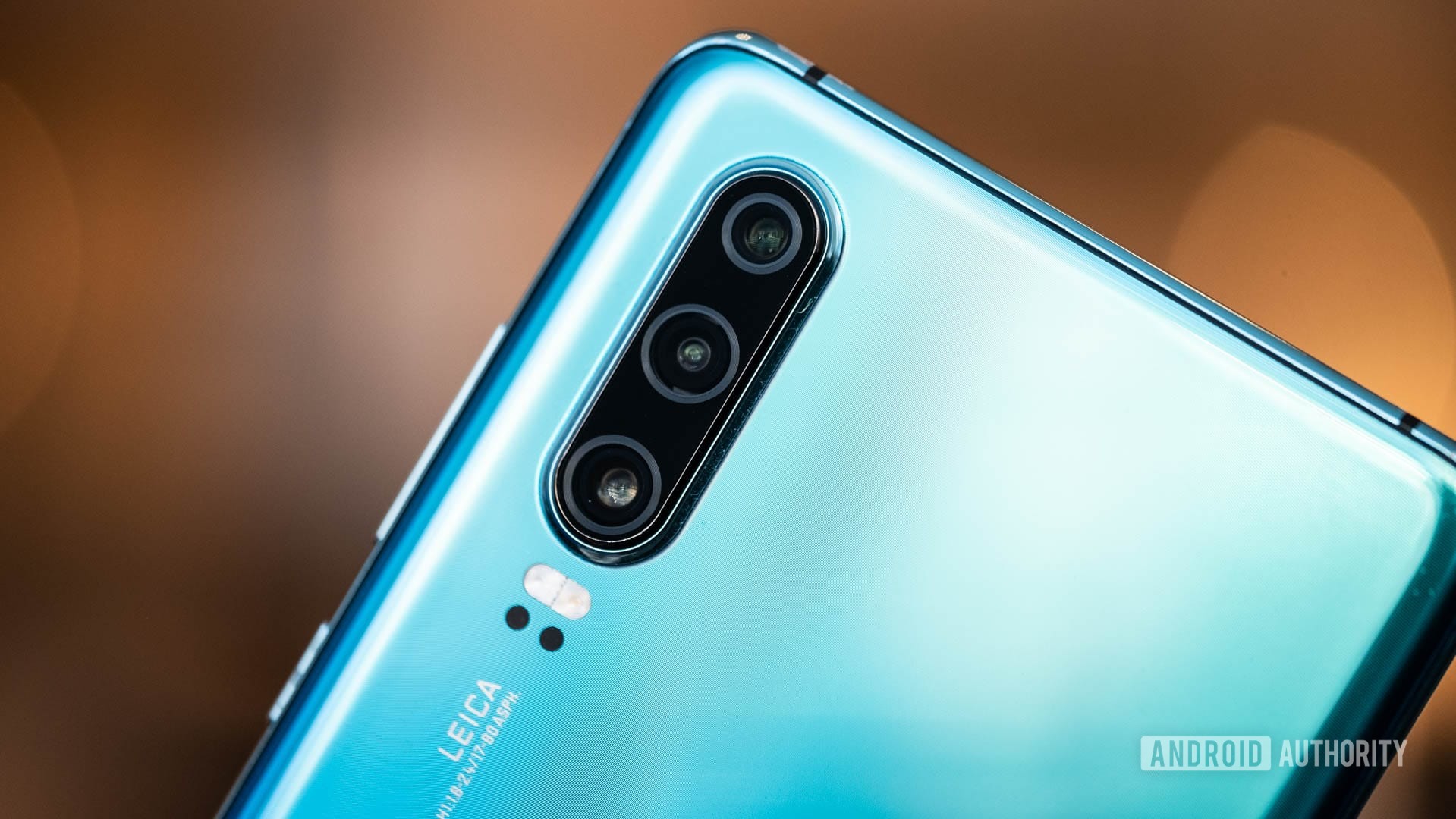
HUAWEI P30 Pro review: The verdict
I quite enjoyed my time with the HUAWEI P30, and while it lacks the high-end features like 5x optical zoom, IP68 water and dust resistance, and wireless and reverse wireless charging of the bigger P30 Pro model, it’s still quite a competitive device in certain markets.
The image quality is stellar, the headphone jack is a nice addition, and the build quality is top-notch. These are things that put it squarely above its direct competition, but if the software experience and battery life are bigger priorities for you, we’d advise you look elsewhere.
Before you go…
Want to hear more about the HUAWEI P30? I hopped on the Android Authority podcast to discuss this device alongside the bigger P30 Pro, so take a listen and subscribe if you like what you hear!